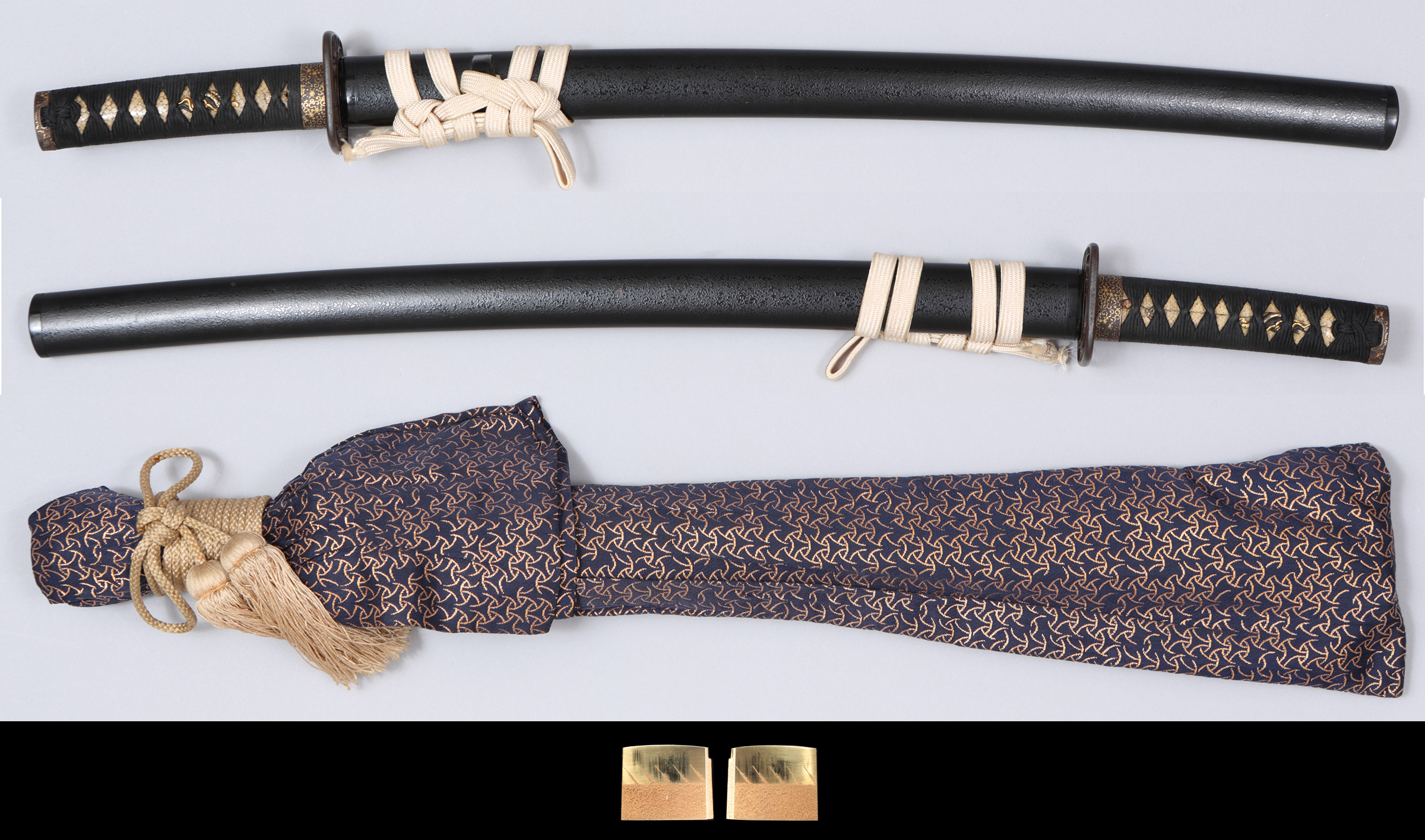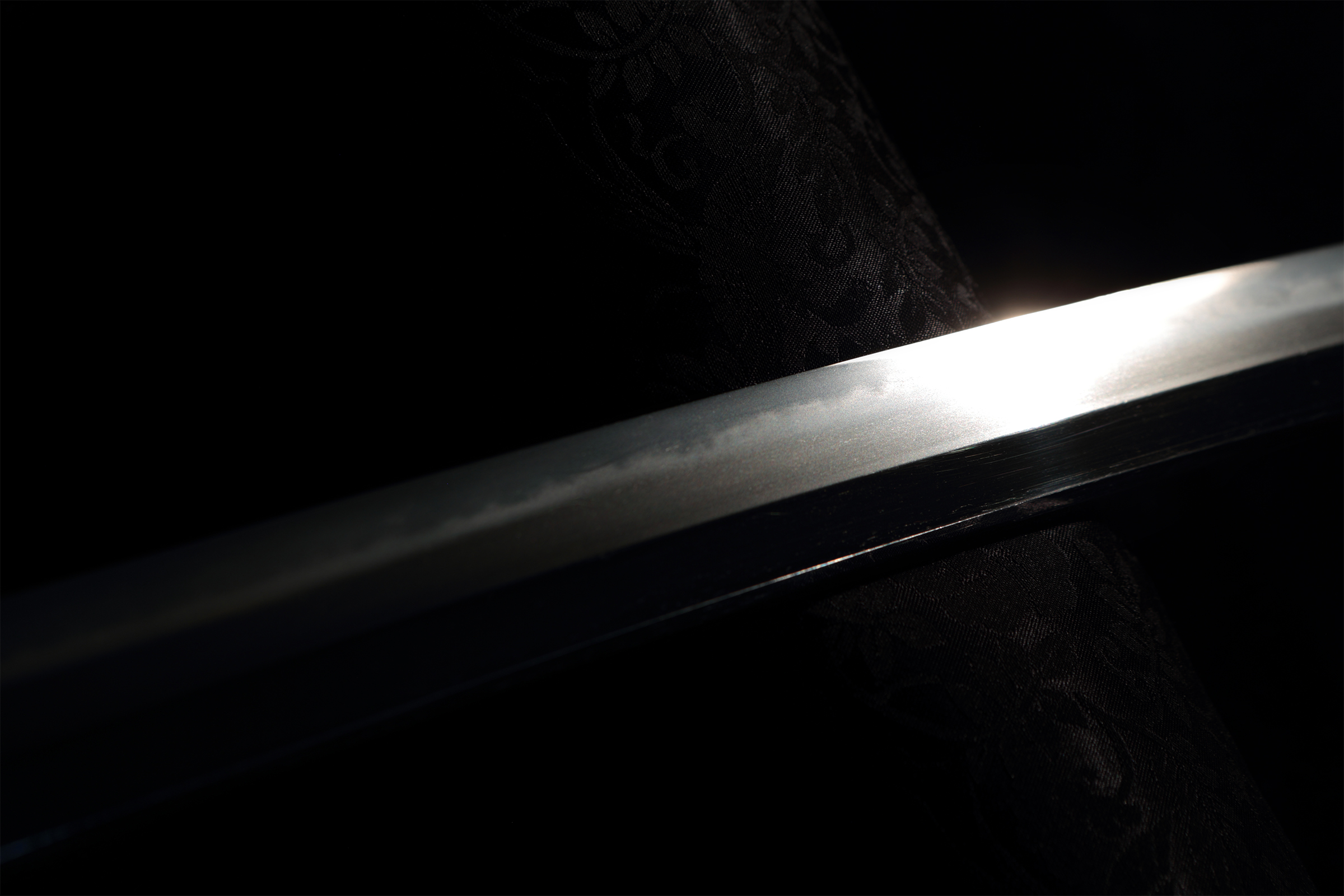
  |
Wakizashi, Koshirae |
Yamashiro no kami Nobutoshi
|
[ Signature ] omote : no signature ura : - |
[ Size ]Blade length 54.0cm (1 shaku 7 sun 8 bu 2 rin), sori 1.2cm (3 bu 9 rin), moto-haba base width 3.17cm, moto-kasane base width 0.73cm, saki-haba tip width 2.25cm, saki-kasane tip thickness 0.48cm, 1 hole, sword weight 620g, total length of koshirae 75cm |
[ Period ] Edo, middle of. Around Tenna 天和 (1681-1684) |
[ Province ] Harima |
 |
[ Feature ] |
[ Attachments ] Habaki(suaka-ji, gold foiled, single), koshirae bag of koshirae and NBTHK hozon paper (issued on 27th Jan. Heisei 24(2012)) |
 |
[ Item number ] A020724 [ Price ] JPY 220,000- (shipping and insurance fee are not included in the price)PRICE DOWN! |
Please order by E-mail.

About TOUKEN KOMACHI
BACK
TEL +81-(0)3-5284-9014/ FAX +81-(0)3-5284-9043____E-mail : s_tsukada@toukenkomachi.com
Copyright © 2009- Touken komachi All rights reserved. |